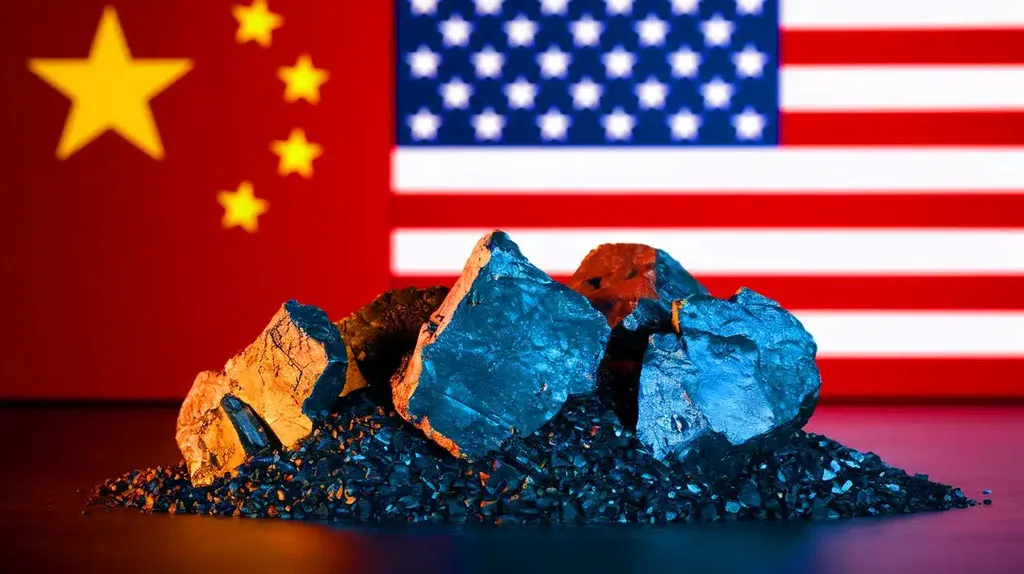The fragile peace between Washington and Beijing is unravelling, as China’s latest move to tighten export controls on rare earth elements has reignited trade tensions. The decision, announced late Wednesday by China’s Ministry of Commerce, targets 12 critical minerals, including holmium, erbium, thulium, europium, and ytterbium—key components in semiconductors, aircraft engines, electric vehicles, and advanced weapons systems. While Beijing insists these measures are driven by national security concerns and not intended as export bans, the move has sent shockwaves through Washington and global markets.
China’s dominance in rare earth processing—over 90% of the world’s supply—gives it unparalleled leverage, a fact that has long been a point of concern in the U.S. defence and technology sectors. These minerals are indispensable, powering everything from F-35 fighter jets and precision-guided missiles to smartphones and wind turbines. The Chinese Ministry of Commerce defended the restrictions, stating that export applications for civilian use would continue to be approved, but the underlying message is clear: Beijing is willing to wield its economic might in response to perceived threats.
U.S. President Donald Trump wasted no time in responding, announcing a 100% tariff on Chinese imports starting November 1, alongside new export controls on critical software. His reaction, posted on Truth Social, accused Beijing of undermining an earlier truce, sending Wall Street into a tailspin. Major indexes recorded their steepest drop in six months, with Big Tech shares tumbling as investors grappled with the implications of a renewed trade war. Nvidia, a major player in U.S.-China technology tensions, fell nearly 5%, underscoring the broader market jitters.
China’s Commerce Ministry fired back on Sunday, accusing Washington of hypocrisy and citing U.S. actions that it claimed severely harmed Chinese interests, including the addition of Chinese firms to an export blacklist and new port fees on China-linked ships. Yet, Beijing refrained from imposing fresh tariffs, a move analysts interpreted as a deliberate signal that China still seeks a pathway to negotiation. “By clarifying the rationale behind its retaliatory measures, Beijing is also outlining a potential path forward for negotiations. The ball is now in the U.S. court,” said Alfredo Montufar-Helu, managing director at GreenPoint.
The Chinese approach stands in contrast to previous tit-for-tat escalations, where tariff rates soared to as high as 145% on U.S. goods and 125% on Chinese exports. Instead, Beijing appears to be leveraging its rare earth dominance as a strategic counterbalance to Washington’s controls on semiconductor exports and AI technology. “The Chinese saw the reaction and leverage they had with export controls earlier this year, so it’s not surprising they would head into these talks to try to stack the deck in their favor,” said Jon Hillman, a senior fellow for geoeconomics at the Council on Foreign Relations.
Yet, China’s restraint—stopping short of retaliatory tariffs—may also signal caution. Analysts at Hutong Research suggested that Beijing could be repositioning for longer-term stability rather than short-term retaliation, reflecting “diminished confidence in [Trump’s] ability to restrain hawks or stick to commitments.”
The broader implications of this standoff are significant. The Center for Strategic and International Studies (CSIS) warned that the latest restrictions could disrupt U.S. defence supply chains, particularly for components like high-performance magnets used in radar systems, missile guidance, and stealth technologies. “Even short-term shortages could have cascading effects on production timelines and strategic readiness,” the think tank’s analysis cautioned.
Meanwhile, China’s market regulator has intensified scrutiny of major U.S. firms, including Nvidia and Qualcomm, with the State Administration for Market Regulation announcing an antitrust probe into Qualcomm’s acquisition of Israeli chip designer Autotalks. This regulatory pressure further heightens the challenges for American tech companies operating in China.
At its core, this renewed standoff reflects a deeper struggle for control. Both nations are seeking to weaponise economic interdependence without triggering full decoupling. “The U.S. is now dealing with a more assertive, less U.S.-dependent Beijing than during Trump 1.0,” wrote Wendy Cutler of the Asia Society Policy Institute. “The past 24 hours leave no doubt that those days are over.”
For Trump, whose foreign policy hinges on transactional, one-to-one deals, the latest crisis illustrates the limits of unilateral leverage against a peer power. For Xi, it is a calculated reminder that China’s control over the building blocks of modern industry remains one of its most potent strategic tools.
The rare earth dispute has become more than a trade spat—it’s a battle over who controls the critical technologies of

